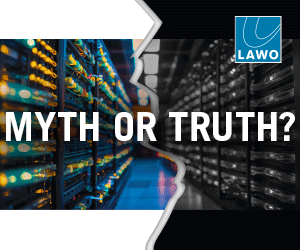In an age where we have supposedly moved beyond theory and into the practice of High Definition TV, its time trevisit the format and see what benefits it is bringing to this market. Nick Grande of UAE-based consultancy ChannelSculptor examines the need for greater commerciality in regional HDTV in this white paper In March 2009, […]
 In an age where we have supposedly moved beyond theory and into the practice of High Definition TV, its time trevisit the format and see what benefits it is bringing to this market. Nick Grande of UAE-based consultancy ChannelSculptor examines the need for greater commerciality in regional HDTV in this white paper
In an age where we have supposedly moved beyond theory and into the practice of High Definition TV, its time trevisit the format and see what benefits it is bringing to this market. Nick Grande of UAE-based consultancy ChannelSculptor examines the need for greater commerciality in regional HDTV in this white paper
In March 2009, I wrote a paper for CABSAT analysing the potential for HD take-up in the MENA region. At that time, Luxe TV was the only MENA HD channel, whilst Europe already had 130 HD channels.
Four years on, there are now tens of millions of HD screens in living rooms across the region, and over 10% of the MENA channels are broadcast in HD compared with 9.3% in Europe.
MENA appears to be ahead of the curve, but at what price? This follow-up paper examines the need for greater commerciality in regional HDTV.
THE CURRENT MENA HDTV MARKET
There are 103 HD TV channels operating in the region at the time of writing. See Figure 1.
OSN is driving the advancement of HD in the region, representing almost a quarter of HD channels available. However, there is another more significant trend in the region:
* More than half the HD channels operating in the region are government-owned, and
* 80% of these are broadcast free-to-air because encryption is perceived to undermine emerging HD audiences
These market dynamics are in stark contrast with developed television markets elsewhere.
INTERNATIONAL TRENDS IN HDTV
More than 35% of US satellite channels are now HD, and according to Nielsen, more than 70% of US homes own at least one HD TV.
In Europe, 917 (9.3%) of the 9,879 linear channels are HD (Source: Mavise). The proportion is similar to MENA, but the encryption mix is different. In Europe, most HD channels are privately owned, and between 75% and 95% are encrypted.
See Figure 2.
In fact over 80% of the channels being aired in HD are encrypted versions of existing SD channels (Mavise). The SD versions are commonly free-to-air.
With the notable exception of state-financed news providers (such as Russia Today), who broadcast HD FTA, European broadcasters are using HD as a tool to develop new subscription revenues and recoup their investments in HD infrastructure.
GERMANY REINVENTS PAY TV
Those of us who have grown up with pay-TV tend to think of it like a gym membership. Ranging from USD20-80 a month, its another utility that sneaks into the household budget. Here in the Middle East, this monthly payment model has always met with huge resistance. People would rather pay cash up front than carry a perceived debt.
OSN, the most established regional pay-TV platform, has avoided this challenge by focusing on high income households and settling for a smaller penetration of the market. Overall pay-TV penetration in the region has remained low at around 6% – compared with 25% and above elsewhere.
TV strategists often compare the MENA pay-TV market with Germany, where consumers have similarly resisted paying monthly subscriptions. However, three years ago the HD+ business model was developed as a volume retail low pay approach to pay-TV. Consumers buy an HD+ receiver (similarly priced to a regular HD receiver) that comes pre-loaded with a 12-month free trial of HD channels. All of these channels are available free-to-air in SD, but an HD+ box is required in order to receive them in HD. After one year, the consumer is asked for 50 Euros to continue receiving the service for a further 12 months.
In October 2012, HD+ announced that 2.8m households were receiving the service, with 2m households in their free-trial period and 800k households paying the HD+ annual fee (up nearly 300% from 2011). Half of the satellite receivers sold in Germany are now HD. This is a staggering achievement in a market that has resisted pay-TV for 20 years.
LOW-PAY HDTV IN THE MIDDLE EAST
HD+ might seem familiar: MBC adopted a similar approach for the 2011 launch of its HD channels.
MBC recognised that HDTV will take several years to become widely adopted in the region. The high cost of satellite capacity means that HD channels have to be broadcast in MPEG4 and only a tiny proportion of the 40 million or so MENA TV households presently own MPEG4 receivers.
They also recognised that the switch from MPEG2 to MPEG4 represented a “big bang” opportunity to introduce low pay TV receivers into the MENA TV marketplace. Including an encryption system in a new MPEG4 receiver adds only a small increment to its overall cost.
By encrypting its HD offering and licensing to various platform providers (ICHD, MyHD, ADTV and OSN), MBC have achieved several objectives:
* It has distribution partners driving the take-up of MBC HD.
* It knows how many HD receivers are carrying its channels, and where they are sold.
* It has recouped some of its up-front investment in HD (head end, production and content rights) through licence fees.
* It has created a cachet around the MBC HD channels.
What impresses me most about the MBC strategy is the broadcasters commitment to the long-term future of its network. It saw clearly that it had a one-time opportunity with HD. Whilst it might have achieved a short-term boost in HD viewership by going free-to-air, it recognised that through low-pay HD pay TV, it could drive viewership far more effectively in the longer term and at the same time, create new revenue opportunities.
By encrypting its HD channels, MBC has turned a distribution headache into a long term viewership and revenue opportunity.
HD IMPLICATIONS FOR MENA SATELLITE HOTSPOTS
HD requires significantly more satellite capacity than SD, even at MPEG4 compression rates. The great temptation for broadcasters is to try to make do with a low bandwidth (say 6 Meg) but this can be catastrophic to channel quality poor or inconsistent image quality defeats the whole purpose of HDTV. European and US benchmarks point to 8-12 Meg being an acceptable level for HD channels, depending on the amount of action on the screen. At $ 100k per Meg, the capacity cost of an HD channel is, therefore, around $1 million a year.
Of course, price and availability varies between satellites according to demand. FTA SD broadcasters pay a big premium for a slot with a big audience reach. For example, the 7°W orbital position shared by Nilesat, Noorsat and Eutelsat is reportedly so crowded that broadcasters are queuing for SD slots that become available when existing channel tenants dont pay their bills and get removed. Regional HD (MPEG4) audiences are still small, so commercial FTA broadcasters cannot justify $1m capacity costs hence the reason why so many of the channels in Figure 1 are government owned.
With MBC already available in the market, attention is now focused on where and when FTA commercial networks such as Rotana Media will launch in HD. Satellite providers with capacity available for HD will need to offer strategic deals to attract big commercial networks.
Low pay TV operators offer the most integrated HD growth strategy for satellite providers. By partnering on an exclusive basis, they can create a virtuous circle: platforms driving audience to the satellite and the satellite providing a cost-effective platform for growth. In the case of new regional hot spots such as YahLive at 52.5°E, every MPEG4 decoder sold should be accompanied by a new dish installation.
MAKING HD PAY TV WORK
The launch of successful low pay HD platforms requires trust and a lot of give and take between broadcasters, satellite providers and platform owners. Between them, they need to come up with a formula that is attractive to the consumer:
* Huge consumer awareness campaign through retailers and media.
* Attractive and mainly exclusive HD channels
*
A box that is similarly priced or ideally cheaper than equivalent FTA receivers.
* Hassle-free installation, reliable hardware and good after-sales service for all customers.
The up-front cost of each element is very high, but if any of the four is missing, the formula will fail.
History shows that a pay TV platform needs very deep pockets during its first three years it will need to commit tens or even hundreds of millions of dollars during this period, and will seek to spread this risk with satellite and TV channel partners that are similarly financially committed to the project. The most successful initiatives will be based on long-term strategic partnerships between big players willing to invest for future revenue and market share.
CONCLUSION
If MENA broadcasters continue to launch HD channels free-to-air:
* Pay-TV penetration will remain low at 6%
* TV advertising revenues will continue on their current trends, and
* The cost of satellite capacity will increase dramatically
The resulting profit reductions will make the market less attractive to commercially run channels whether regional or international. Regional satellites will become ever more saturated with state-financed broadcasters that can afford to operate at a permanent loss.
This is a bad outcome for the industry and for consumers who will have to deal increasingly with programming decisions based on regional politics rather than viewer preferences.
So far, the take-up of low-pay HD services in MENA has been steady but uninspiring, and every month, another few HD channels launches free-to-air. There is still time for a new “Low-Pay HD” platform to grow to critical mass, but this can only happen if there is trust and significant shared investment between satellites, broadcasters and platform owners.
Nick Grande is Managing Director of ChannelSculptor, a UAE-based strategic consultancy and service provider for the MENA broadcast industry.













































































